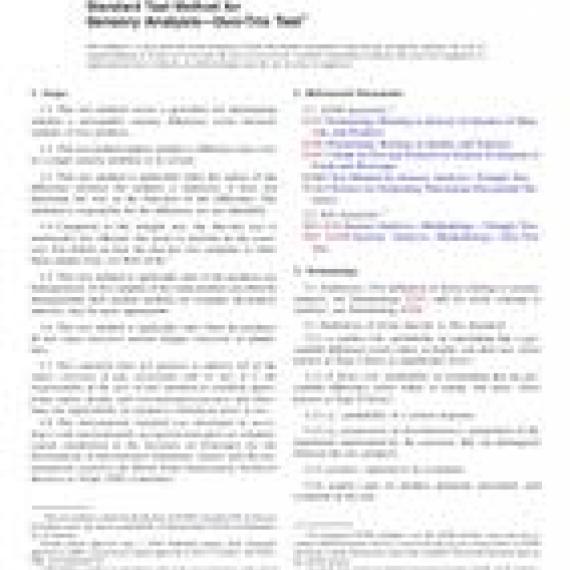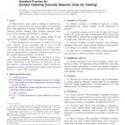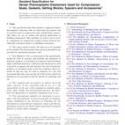-
 1xADA 34-1978
$17.10
1xADA 34-1978
$17.10 -
 1xAWS API-M:2008
$43.65
1xAWS API-M:2008
$43.65 -
 1xAASHTO M 45-06 (2010)
$16.65
1xAASHTO M 45-06 (2010)
$16.65
No products
ASTM E2610-18
ASTM E2610-18 Standard Test Method for Sensory Analysis-Duo-Trio Test
standard by ASTM International, 08/01/2018
Full Description
1.1This test method covers a procedure for determining whether a perceptible sensory difference exists between samples of two products.
1.2This test method applies whether a difference may exist in a single sensory attribute or in several.
1.3This test method is applicable when the nature of the difference between the samples is unknown. It does not determine the size or the direction of the difference. The attribute(s) responsible for the difference are not identified.
1.4Compared to the triangle test, the duo-trio test is statistically less efficient, but easier to perform by the assessors. For details on how the duo-trio test compares to other three-sample tests, see Refs (1-4).2
1.5This test method is applicable only if the products are homogeneous. If two samples of the same product can often be distinguished, then another method, for example, descriptive analysis, may be more appropriate.
1.6This test method is applicable only when the products do not cause excessive sensory fatigue, carryover or adaptation.
1.7This standard does not purport to address all of the safety concerns, if any, associated with its use. It is the responsibility of the user of this standard to establish appropriate safety, health, and environmental practices and determine the applicability of regulatory limitations prior to use.
1.8This international standard was developed in accordance with internationally recognized principles on standardization established in the Decision on Principles for the Development of International Standards, Guides and Recommendations issued by the World Trade Organization Technical Barriers to Trade (TBT) Committee.


































